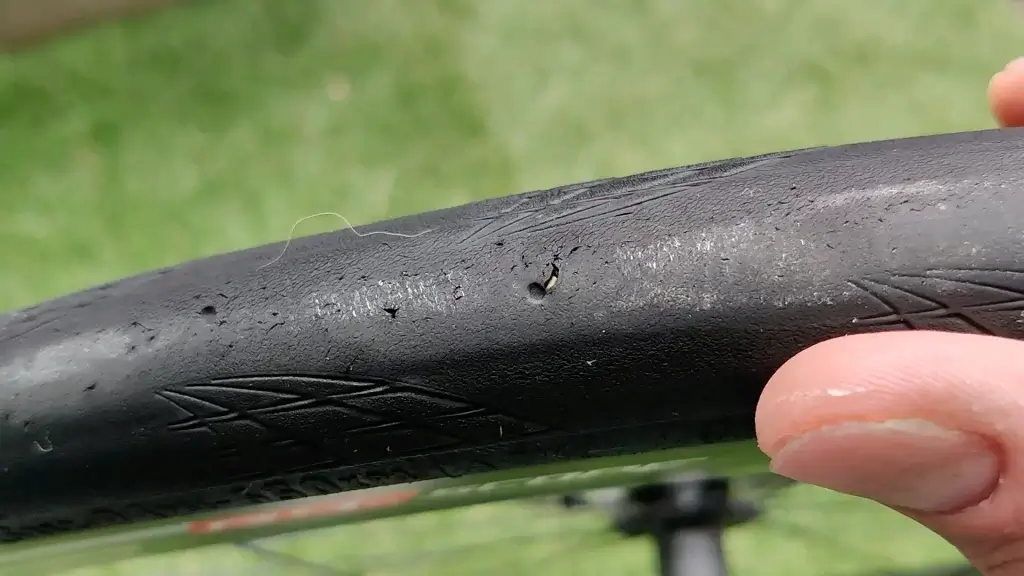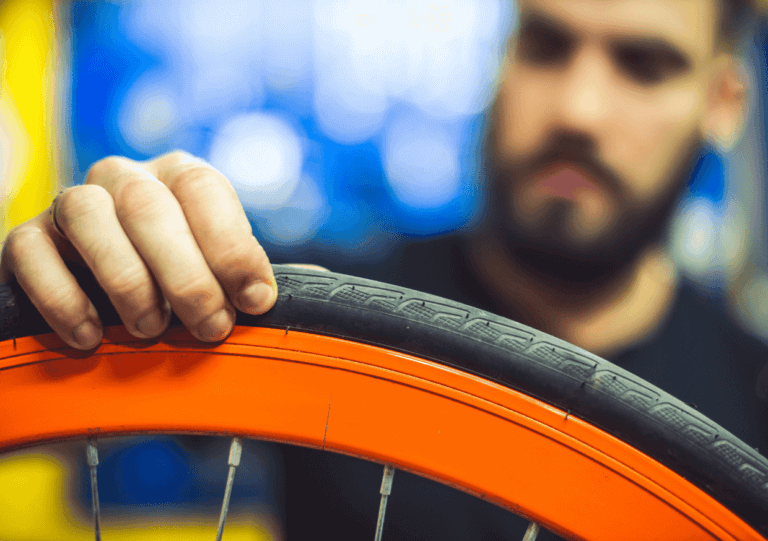Tires are the sole point of contact between your bike and the road, influencing everything from traction to handling. They bear the brunt of wear and tear, especially during rides on rough terrain or in adverse weather conditions.
Ignoring worn-out tires poses significant risks, including compromised grip, increased likelihood of punctures, and even potential blowouts, jeopardizing both your safety and cycling experience.
In this guide, we’ll delve into the lifespan of bike tires, how to recognize signs of wear, and why timely replacements are crucial for maintaining optimal performance and safety on the road.
Understanding Bike Tire Lifespan

Bike tires, just like any other component of your bicycle, wear out over time. But how long do they actually last? The lifespan of your bike tires depends on various factors, including:
1. Tire Quality: Just like with anything else, you get what you pay for. Fancy, high-quality tires tend to stick around longer than the bargain-bin ones. Brands like Continental, Schwalbe, and Michelin are known for making durable tires that can handle the miles. Remember, though, some tires are designed for speed and may wear out faster, while others prioritize durability and sacrifice a bit of speed.
2. Riding Conditions: The terrain you ride on plays a significant role in determining how quickly your tires wear out. If it’s all smooth pavement, your tires might last longer. But if you’re dodging potholes and gravel every day, they’re going to wear out faster. Rough terrain and gnarly weather can really take a toll on your tires.
3. Tire Pressure: Maintaining the correct tire pressure is essential for both performance and longevity. Over or under-inflated tires can wear unevenly and lead to premature wear and tear.
4. Riding Style: Are you a speed demon who loves to push your bike to the limit? Or do you take it easy and cruise along? How you ride can affect how quickly your tires wear out. If you’re always slamming on the brakes or taking sharp turns, your tires are going to feel the burn.
5. Mileage: Like a car’s odometer, your bike’s mileage tells a story. On average, bike tires can go anywhere from 1,000 to 5,000 miles (1,600 to 8,000 kilometres) before they start showing their age. But remember, this number can change based on everything else we’ve talked about.
Signs Your Bike Tires Need Replacing

So, how do you know when it’s time to replace your bike tires? Here are some telltale signs to look out for:
1. Tread Wear: Take a closer peek at the tread pattern on your tires. If it’s worn down quite a bit, especially to the point where you can see the inner casing, it’s definitely time to consider getting new tires. Some tires come with tread wear indicators that tell you when it’s time for a replacement.
For instance, Continental road tires now feature two small ‘tap-holes’ in the central area of the tread. These are designed to disappear as the tire nears the end of its serviceable life. Once the holes are gone, it’s time to bin the tire, no matter how tempting it is to try to wring a bit more life out of them. Tread wear is like the tread on your shoes – when it starts to wear thin, it’s not as effective at gripping the road, which can affect your control and safety.
2. Cuts or Punctures: Give your tires a thorough once-over for any cuts, punctures, or damage, whether it’s on the sidewalls or across the tread. Even small cuts can weaken the tire’s structure and increase the risk of a blowout, especially if you hit a bump or debris on the road. So, if you spot any damage, it’s better to be safe than sorry and replace the tire before it causes any problems.
3. Bulges or Blisters: Keep an eye out for any unusual bulges or blisters on the sidewalls of your tires. These can be signs of internal damage, like a weakened spot or separation between layers, which can make the tire prone to failure. If you spot any bulges or blisters, it’s best to stop riding on that tire immediately and replace it as soon as possible to avoid any accidents or blowouts.
4. Loss of Grip: Pay attention to how your bike feels when you’re riding. If you start to notice a decrease in traction or stability, especially when cornering or braking, it could be a sign that your tires are past their prime.
Worn-out tires are less effective at gripping the road, which can affect your ability to control your bike and increase the risk of accidents. So, if you’re feeling less confident in your bike’s handling, it’s probably time to swap out those old tires for some fresh ones.
Tips for Extending Tire Lifespan

While bike tires are bound to wear out eventually, there are steps you can take to prolong their lifespan:
1. Proper Maintenance: Regularly inspecting your tires is key to identifying any signs of wear and tear early on. Check for cuts, bulges, or excessive tread wear. Additionally, ensure that your tires are inflated to the recommended pressure. Under-inflated tires are more susceptible to damage and can wear out faster, while over-inflated tires can lead to a harsher ride and increased risk of punctures.
2. Rotate Your Tires: If you have multiple sets of tires for different riding conditions or preferences, consider rotating them regularly. By switching between sets, you can distribute the wear more evenly across all your tires. This simple practice can significantly extend the lifespan of each tire, ultimately saving you time and money on replacements.
3. Avoid Harsh Conditions: While it’s not always possible to control the riding conditions, making an effort to avoid harsh environments can help prolong the life of your tires. Try to steer clear of rough terrain with sharp debris or potholes that can cause punctures or cuts to your tires. Similarly, extreme weather conditions such as heavy rain, snow, or extreme heat can accelerate tire wear, so use caution and consider alternative routes when necessary.
4. Use Tire Liners: Tire liners are thin strips of material that sit between your tire and inner tube, providing an extra layer of protection against punctures and cuts. These inexpensive accessories can be easily installed and can make a significant difference in preventing flats and extending the lifespan of your tires, especially if you frequently ride on roads with debris or rough surfaces.
5. Invest in Quality Tires: While it may be tempting to opt for budget-friendly tires, investing in high-quality, durable tires can ultimately save you money in the long run. Premium tires are constructed with advanced materials and technologies that offer better puncture resistance, grip, and overall performance. While they may come with a higher upfront cost, quality tires tend to last longer and require fewer replacements, ultimately providing better value for your money.

